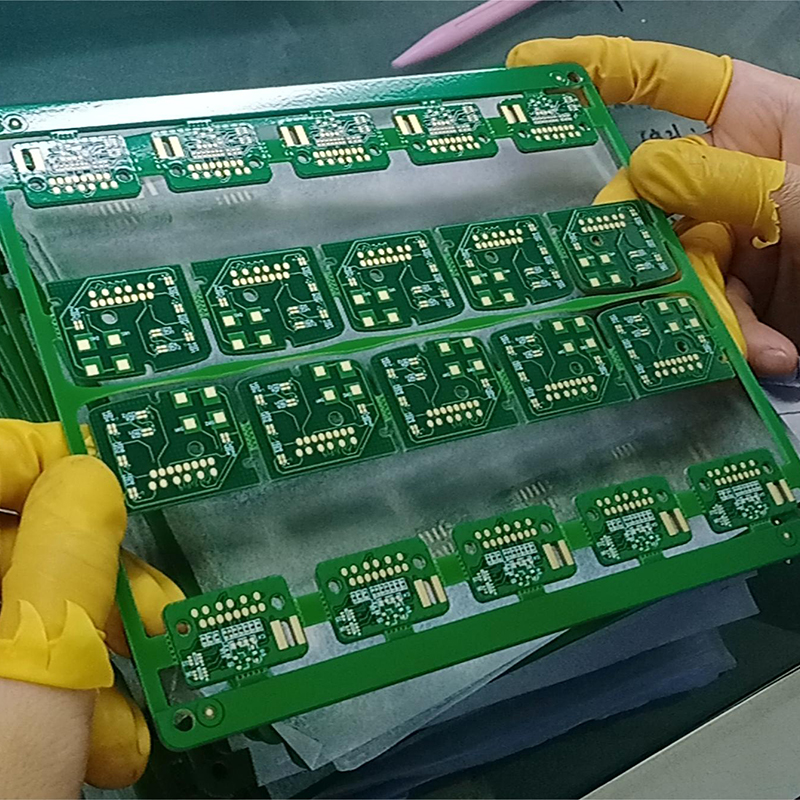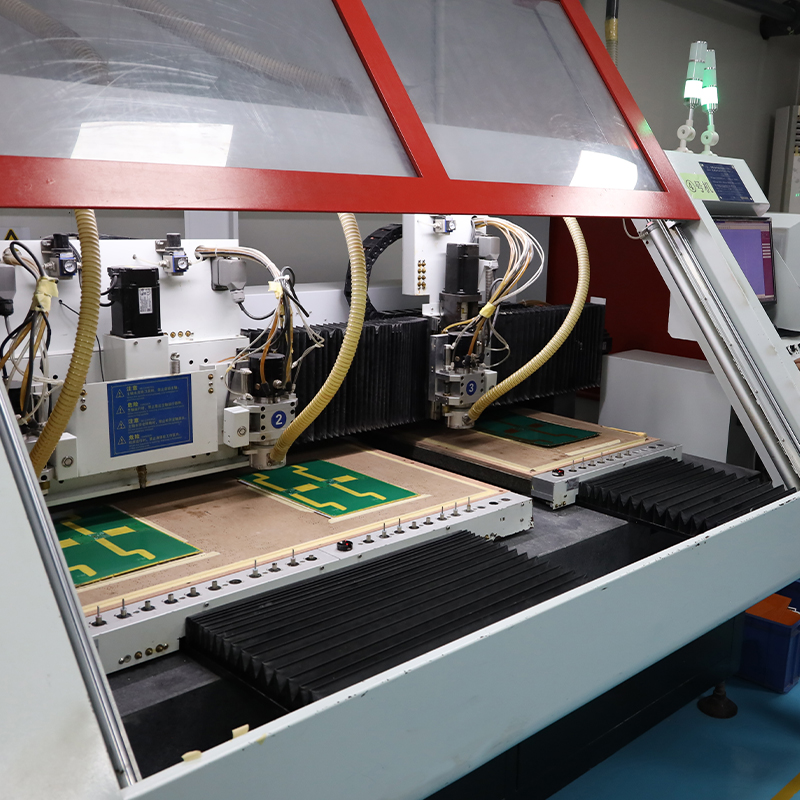The rapid development of the electronics industry has led to the wide application of rigid-flex board. However, due to differences in the strength, technology, experience, production process, process capability and equipment configuration of different manufacturers, the quality problems of rigid-flex boards in the mass production process are also different. The following Capel will explain in detail the two common problems and solutions that will occur in the mass production of flexible rigid boards.
In the mass production process of rigid-flex boards, poor tinning is a common problem. Poor tinning may lead to unstable
solder joints and affect product reliability.
Here are some possible causes of poor tinning:
1. Cleaning problem: If the circuit board surface is not thoroughly cleaned before tinning, it may lead to poor soldering;
2. The soldering temperature is not suitable: if the soldering temperature is too high or too low, it may lead to poor tinning;
3. Solder paste quality problems: low-quality solder paste may lead to poor tinning;
4. Quality problems of SMD components: If the pad quality of SMD components is not ideal, it will also lead to poor tinning;
5. Inaccurate welding operation: Inaccurate welding operation may also lead to poor tinning.
In order to better avoid or solve these poor soldering problems, please pay attention to the following points:
1. Ensure that the board surface is thoroughly cleaned to remove oil, dust and other impurities before tinning;
2. Control the temperature and time of tinning: In the process of tinning, it is very important to control the temperature and time of tinning. Make sure to use the correct soldering temperature and make appropriate adjustments according to the soldering materials and needs. Excessive temperature and too long The time may cause the solder joints to overheat or melt, and even cause damage to the rigid-flex board. On the contrary, too low temperature and time may cause the solder material to be unable to completely wet and diffuse to the solder joint, thus forming a weak solder joint;
3. Select the appropriate soldering material: select a reliable solder paste supplier, ensure that it matches the material of the rigid-flex board, and ensure that the conditions for storing and using the solder paste are good.
Select high-quality soldering materials to ensure that the soldering materials have good wettability and proper melting point, so that they can be evenly distributed and form stable solder joints during the tinning process;
4. Make sure to use good quality patch components, and check the flatness and coating of the pad;
5. Training and improving welding operation skills to ensure the correct soldering method and time;
6. Control the thickness and uniformity of the tin: ensure that the tin is evenly distributed on the soldering point to avoid local concentration and unevenness. Appropriate tools and techniques, such as tinning machines or automatic tinning equipment, can be used to ensure even distribution and proper thickness of soldering material;
7. Regular inspection and testing: Regular inspection and testing are carried out to ensure the quality of the solder joints of the rigid-flex board. The quality and reliability of solder joints can be assessed using visual inspection, pull testing, etc. Find and solve the problem of poor tinning in time to avoid quality problems and failures in subsequent production.
Insufficient hole copper thickness and uneven hole copper plating are also problems that may occur in the mass production of
rigid-flex boards. The occurrence of these problems may affect product quality. The following analyzes the reasons and
solutions that may cause this problem:
Reason:
1. Pretreatment problem: Before electroplating, the pretreatment of the hole wall is very important. If there are problems such as corrosion, contamination or unevenness in the hole wall, it will affect the uniformity and adhesion of the plating process. Make sure the hole walls are thoroughly cleaned to remove any contaminants and oxide layers.
2. Plating solution formulation problem: Incorrect plating solution formulation can also lead to uneven plating. The composition and concentration of the plating solution should be strictly controlled and adjusted to ensure uniformity and stability during the plating process.
3. The problem of electroplating parameters: electroplating parameters include current density, electroplating time and temperature, etc. Incorrect plating parameter settings may lead to problems of uneven plating and insufficient thickness. Ensure correct plating parameters are set according to product requirements and make necessary adjustments and monitoring.
4. Process issues: The process steps and operations in the electroplating process will also affect the uniformity and quality of electroplating. Make sure that operators strictly follow the process flow and use appropriate equipment and tools.
Solution:
1. Optimize the pretreatment process to ensure the cleanliness and flatness of the hole wall.
2. Regularly check and adjust the formulation of the electroplating solution to ensure its stability and uniformity.
3. Set correct plating parameters according to product requirements, and monitor and adjust closely.
4. Conduct staff training to improve process operation skills and awareness.
5. Introduce a quality management system to ensure that every link has undergone strict quality control and testing.
6. Strengthen data management and recording: establish a complete data management and recording system to record the test results of hole copper thickness and plating uniformity. Through the statistics and analysis of data, the abnormal situation of hole copper thickness and electroplating uniformity can be found in time, and corresponding measures should be taken to adjust and improve.
The above are the two major problems of poor tinning, insufficient hole copper thickness, and uneven hole copper plating that often occur in rigid-flex board. I hope that the analysis and methods provided by Capel will be helpful to everyone. For more other printed circuit board questions, please consult the Capel expert team, 15 years of circuit board professional and technical experience will escort your project.
Post time: Aug-21-2023
Back








